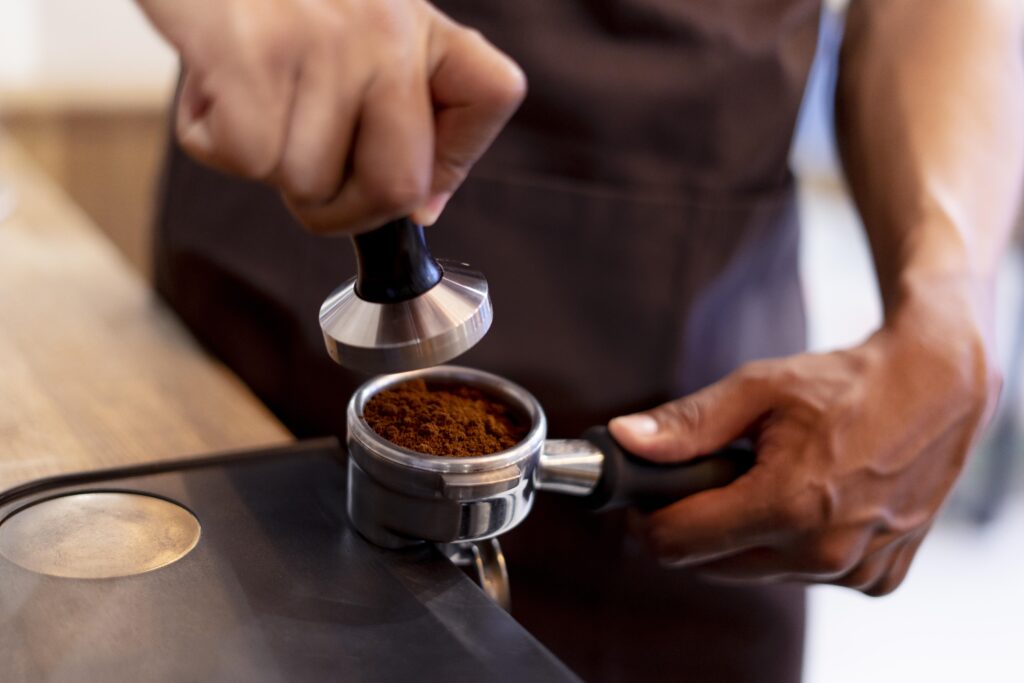Brewing the perfect shot of espresso is a delicate balance of various factors, including coffee dose, water temperature, and extraction time. Among these, the amount of coffee used during the brewing process plays a crucial role in achieving the desired flavours and aromas. In this article, we explore the consequences of using the wrong amount of coffee when brewing espresso, particularly focusing on over and under extraction and the impact they have on the final cup. We’ll be offering insights to enhance brewing techniques and ensure a delightful espresso experience for coffee enthusiasts.
Over-Extraction
When too much coffee is used relative to the amount of water, over-extraction occurs. This means that the water has extracted an excessive amount of solubles from the coffee grounds, leading to an imbalanced and overly intense flavour profile. The result is a shot of espresso that is bitter, astringent, and often unpleasant.
- Taste: Over-extracted espresso tends to have a sharp, harsh bitterness that lingers on the palate. It may also exhibit a dry, puckering sensation due to the extraction of excessive tannins.
- Aroma: The aroma of over-extracted espresso can be overpowering, with burnt or acrid notes.
- Visual Cues: A dark, almost black color with an oily sheen is often associated with over-extracted espresso.
Under-Extraction
Conversely, using too little coffee in relation to the water leads to under-extraction. This means that the water has not extracted enough solubles from the coffee, resulting in a weak and lacklustre cup of espresso.
- Taste: Under-extracted espresso often lacks body and can taste weak, sour, or even watery. It may lack the desired sweetness and complexity.
- Aroma: The aroma of under-extracted espresso may be muted or lacking in intensity, failing to deliver the aromatic richness typically associated with a well-extracted shot.
- Visual Cues: Under-extracted espresso typically appears thin and pale, with a lack of crema.

Balancing the Extraction
Achieving the perfect extraction requires finding the right balance between the coffee dose and water volume. This balance ensures that the water adequately extracts the desirable flavors from the coffee while avoiding over-extraction or under-extraction.
- Overcoming Over-Extraction: If you find your espresso is over-extracted, consider adjusting your brewing parameters. You can decrease the dose of coffee, grind coarser, or decrease the extraction time to mitigate the bitter and astringent flavors.
- Remedying Under-Extraction: When faced with under-extraction, increasing the coffee dose, grinding finer, or extending the extraction time can help extract more flavours and achieve a fuller-bodied espresso.
The Importance of Precision
Consistency is key in brewing espresso, and achieving the desired coffee-to-water ratio is essential. Using a reliable scale to measure the coffee dose accurately ensures consistency and reproducibility, allowing for adjustments to be made more precisely.
The amount of coffee used when brewing espresso significantly impacts the extraction process and, consequently, the flavour profile of the final cup. Over-extraction results in a bitter and harsh taste, while under-extraction yields a weak and lacklustre espresso. Striving for the right balance in coffee dose and water volume is crucial to achieving a well-extracted shot with balanced flavours, aroma, and visual appeal. By understanding the consequences of using the wrong amount of coffee, coffee enthusiasts can refine their brewing techniques and enjoy the full potential of their espresso.




